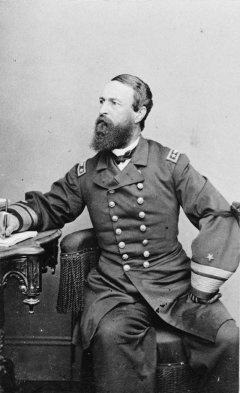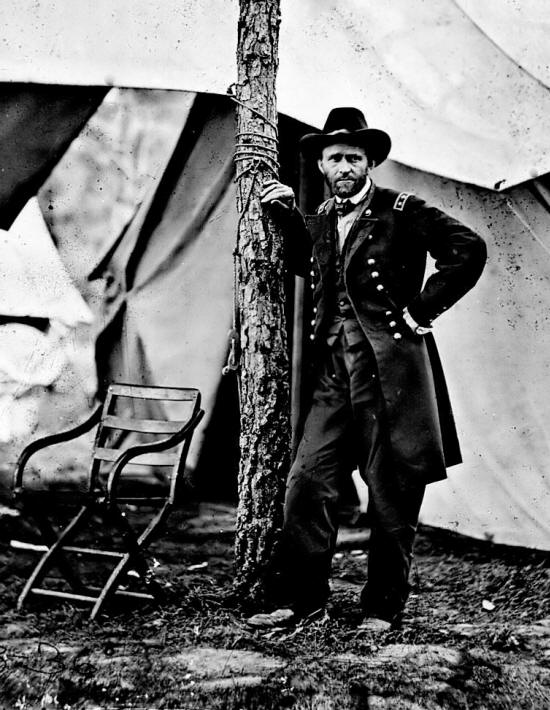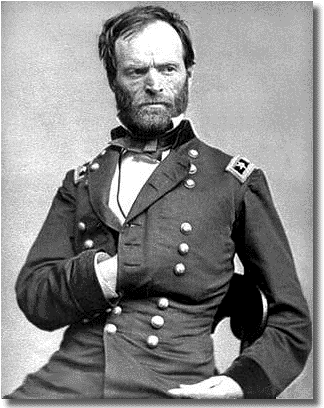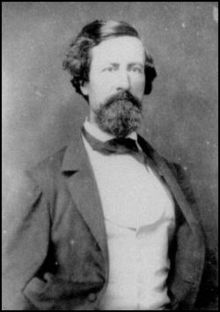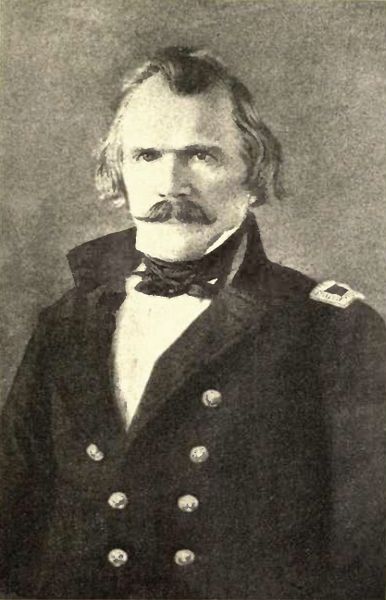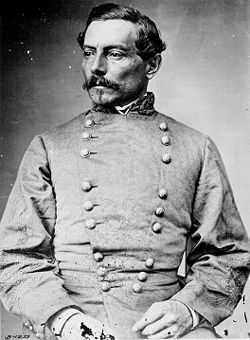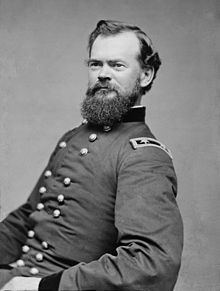April 22 —
Today in 1863, Colonel Benjamin Grierson’s Union troops bring destruction to Central Mississippi as part of a two-week raid along the entire
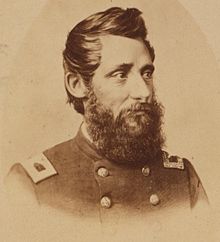
length of the state. This action was a diversion in General Ulysses S. Grant‘s campaign to capture Vicksburg, Mississippi, the last remaining

Confederate stronghold on the Mississippi River. Grant had his army on the western shore of the river, but he was planning to cross the mighty river south of Vicksburg, and move against Vicksburg from the west. Grierson’s orders were to destroy enemy supplies, telegraph lines, and railroads in Mississippi.
Grierson crafted a brilliant campaign. He left La Grange, Tennessee, on April 17 with 1,700 cavalry troopers and began traveling down the eastern side of the state. Whenever Confederate cavalry approached, Grierson sent out a diversionary force to draw them away. The diversionary units then rode back to La Grange, while the main force continued south. On April 22, he dispatched Company B of the 7th Illinois regiment to destroy telegraph lines at Macon, Mississippi, while Grierson rode to Newton Station. Here, Grierson could inflict damage on the Southern Mississippi Railroad, the one specific target identified by Grant. On April 24, his men tore up the tracks and destroyed two trainloads of ammunition bound for Vicksburg.
On May 2, Grierson and his men rode into Union occupied Baton Rouge, Louisiana, ending one of the most spectacular raids of the war. The Yankees killed about 100 Confederates, took 500 prisoners, destroyed 50 miles of rail line, and destroyed hundreds of thousands of dollars of supplies and property. Grierson lost just 3 men killed, 7 wounded, 14 missing. More important, the raiders drew the attention of Confederate troops in Mississippi and weakened the forces at Vicksburg and Port Hudson, Louisiana. Both strongholds fell to the Union in July 1863. For his efforts, Grierson was promoted to brigadier general.
To purchase a signed copy of Larry Auerbach’s novel “COMMON THREADS”, Click Here
Photo courtesy of wikipedia.com


